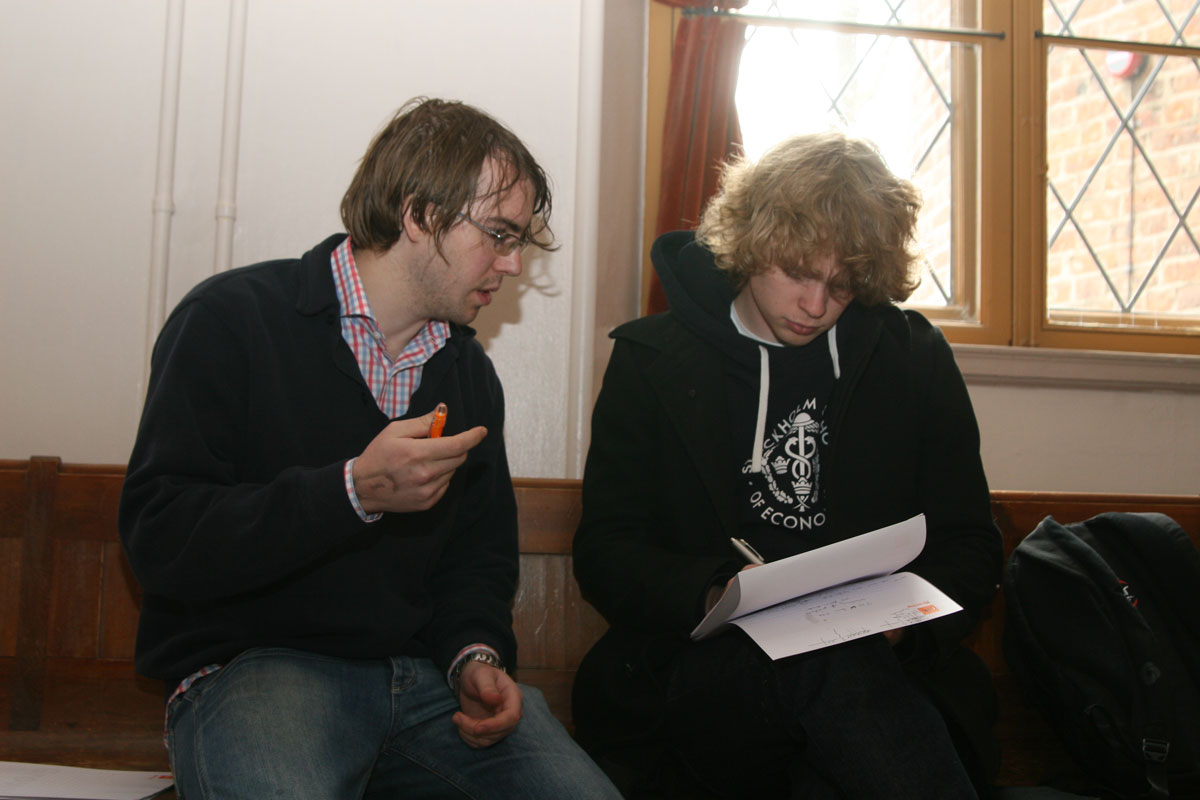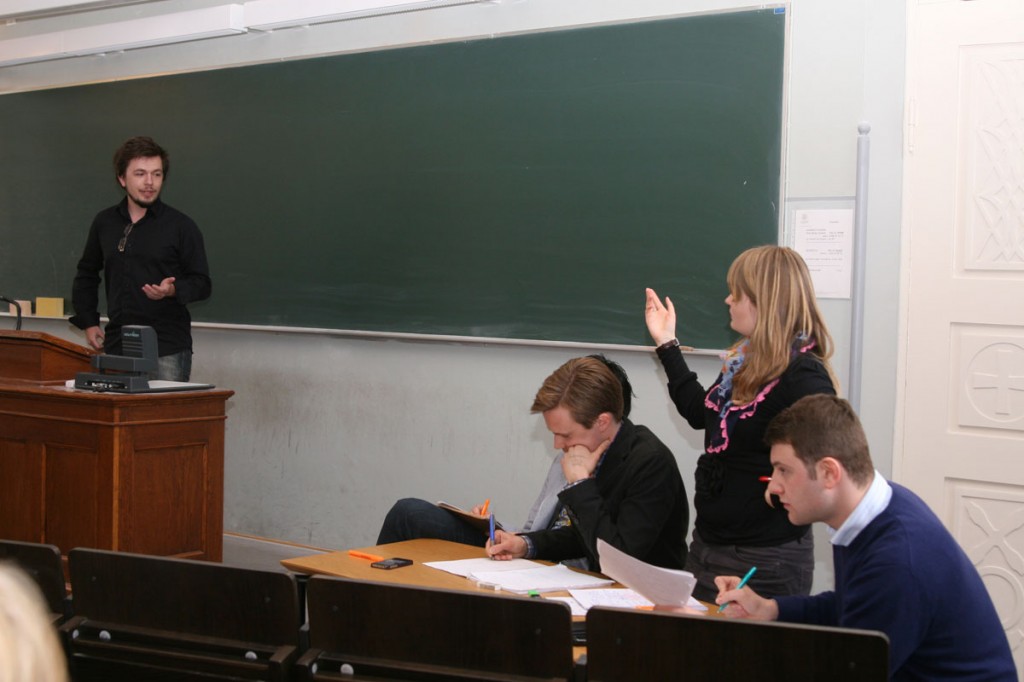In the Grand Finals, the University of Helsinki took on two opening teams from Sweden (Lund University and Stockholm School of Economics) to debate a motion on a political union within Scandinavia. These four teams made it through the ranks of the Lund Open’s Saturday debates in five rounds.
On a shining Sunday outside of Lund’s famous philosophy building Kungshuset, a group of formally-dressed students from all over Scandinavia and from Germany gathered to engage in and watch the Final Debates of the Lund Open 2011. By the organizers’ call, people started walking into the hall for the debate.
“Very typical of Lund”
Along with organizers Sara Moricz and Lucinda David, the president of Lund municipal assembly Annika Annerby-Jansson was present and spoke at the podium to commend the competitors.
On the idea of Lund opening Sweden’s first-ever English-spoken debating tournament, Mayor Jansson exclaimed that “this is very typical of Lund. We are truly living up to our reputation of being both innovative and putting new and better ideas on the table!”
Topic: A united Scandinavia
After the final competitors were announced by Chief Adjudicator Lucinda David, a motion was laid to the floor so that the teams could begin preparation. Topic of the day for the four competing teams began with the possibility of drawing a political union between the four Scandinavian countries, Denmark, Finland, Norway, and Sweden.
The motion, controversial by nature, was to be defended by the two Swedish teams and opposed by the two teams from Finland’s University of Helsinki. Adjudicator Lucy fondly exclaimed that “this would be the Swedes versus the Finns.”
Preparations went on for fifteen minutes while each team of two from the four different schools divided up to prepare speeches and points. The feeling received by the audience was very tense.
Everyone was in deep, almost quiet anticipation for the short fifteen minutes that each team had to prepare their debates. When the fifteen minutes were up, eight ready speakers walked into the room with notes at hand.
Intense debate
The debate to follow was intense at the least. Opening speakers from Lund laid out a hopeful, but straightforward plan to unite Scandinavia. Opening speakers from Helsinki gave quick rebuttals heavily criticizing the motion and the speakers.
The audience seated in the hall were at the edge of their seats, eyes set on the speakers at the podium. As the closing speakers came to finish the arguments regarding the motion set earlier, the debate finally reached its peak.
Each team took liberal opportunities to interrupt their opponents with questions and comments, officially known as “Points of Information.”
Adjudicators later called in a meeting and determined a winner. The closing opposition team from Helsinki had won the debate. Many watching the debate in the lecture hall agreed that the debate was almost a draw between the two closing teams.
“Very competitive”
Parliamentary debate was the only form of debate present during the entire tournament. Sam Block, Deputy Chief Adjudicator visiting from Cambridge, England, stated, “Parliamentary Debate has all of the necessary components to make it competitive.”
According to Block, also a graduate of Cambridge College and highly successful former competitor, Parliamentary Debate in competition is based off of logistics and engages people well. “This form of debating differs from public debates, which are usually focused on just one side of an issue.”
Johan Båge from Stockholm School of Economics was awarded Top Speaker by the judges. He says that debating is less about fine details and more about the bigger picture.
“It is often about presenting it concisely and quickly. 7 minutes is never enough,” explains Båge.
For winning debater Anna Bessonova, debate is mostly about talent at the speaking podium. “For us,” she acknowledges, “it is ultimately 70 percent improvisation and 30 percent preparation.”







